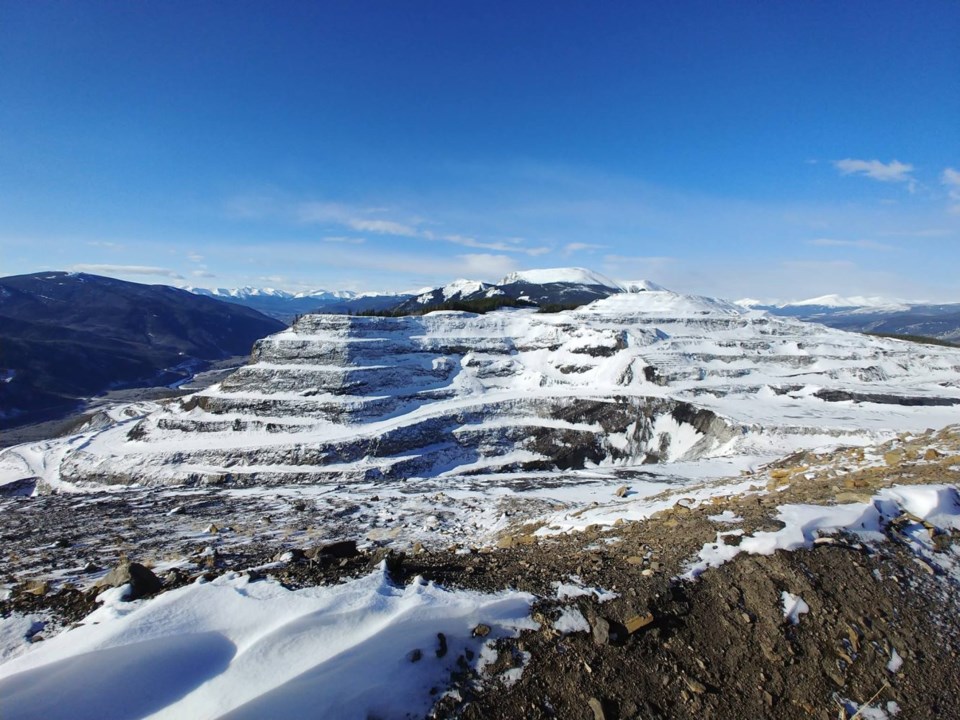Scott Hayes | [email protected]
Local Journalism Initiative Reporter
Two unreported incidents of coal wastewater releases by CST Canada Coal’s (CST Coal) operations in Grande Cache have prompted the Alberta Wilderness Association (AWA) to call for more stringent oversight by the Alberta Energy Regulator (AER).
“One of our major concerns is we're wondering when was the last time these facilities had a safety inspection done, and what was found during those safety inspections,” said Devon Earl, conservation specialist with the AWA.
The first incident occurred on Dec. 29, 2022 when approximately 107,000 litres of coal wash water was released from CST Coal’s Grande Cache mine site. The larger of the two incidents took place on March 4, 2023 when 1.1 million litres of coal fines (water and coal fine particles) were released into the Smoky River.
She referred to the AER’s Dam Safety Program Reports, which summarize safety inspections. The latest available report for 2021 doesn’t break down into inspections of specific facilities or what the results of each inspection were. Searching for “CST” or “Grande Cache” similarly revealed no results.
It does state, “In 2021, the AER received 243 dam-related regulatory submissions (e.g., plans, reports, notifications) and conducted 98 dam inspections. No critical safety deficiencies were identified.”
The 2021 report was published in April 2022, which infers that the 2022 report (that should include details of CST Coal’s first incident) would be published sometime this month.
“We would really like to see that especially for some of these spills,” Earl said.
“When was the last time those facilities were inspected? What did they find? I think that's really important for us to be able to know and for the public to be able to know just in terms of transparency. I think that's something that should be posted online and made publicly available. We haven't been able to find that.”
Coal wastewater is known to have detrimental effects on fish and aquatic ecosystems. Selenium is a common pollutant from coal mining, and can potentially cause deformities and reproductive failure for fish. Coal mining pollutants can also interrupt seasonal migrations and lead to extirpation in affected watersheds.
“The AER needs to ensure that no fish have been harmed by these spills,” said Phillip Meintzer, AWA conservation specialist, in a prepared statement to The Fitzhugh. “If these companies are going to be permitted to operate, then they need to be held accountable for their actions, and our regulator needs to step up to the task.”
The homepage of the AER’s website, however, devotes a banner to the much-publicized Imperial Oil Kearl Oil Sands Incidents, which involves two Imperial Oil’s operations approximately 45 kilometres northeast of Fort McKay. That links to the AER’s page for Ongoing Investigations, which includes information about the Imperial Oil Kearl incidents and general information about the AER's investigation process and enforcement options.
A general search for “CST Coal” on the AER site had no results regarding any of that company’s wastewater releases in Grande Cache. The site does, however, include a Compliance Dashboard page that includes 2,511 entries of incidents dating back to June 2013.
This page does include the two CST Coal incidents but leaves out the amounts involved. A tab for the AER’s Investigations does indicate that the two incidents are in Phase 1, which is when AER staff collect information and conduct a site and incident assessment.
This still leaves the AWA and the rest of the public out in the cold wondering about what happened and how bad it is.
The work of the AER is not just to regulate energy development, but in doing so it also upholds the responsibility of allocating and conserving water resources, managing public lands, and protecting the environment
Earl said that this form of public trust needs to be transparent in order for it to function for the public good.
“Their job is to make sure that industry is running in such a way that's not putting the environment and public health at risk,” Earl said.
“I think some of these incidents lately point to the fact that we might need to ramp up that oversight and make sure that we're holding companies accountable, and make sure that they're not putting human health and the environment at risk with their operations.”
CST Canada Coal Ltd. did not respond to the Fitzhugh’s request for comment by press time.
After the story went to press, however, the Alberta Energy Regulator provided an email response to several questions.
The AER confirmed that it was notified of the two incidents via the 24-hour EDGE reporting line on Jan. 2, 2023 and March 6, 2023.
“Clean up has been complete by the CST Coal, as required. The area will be reinspected by the AER in ice free conditions,” read the statement.
When asked about the full environmental impacts of the two releases, the financial or other penalties that CST Coal faces, or how closely the AER would be following CST Coal to prevent such events in the future, the Alberta Energy Regulator said that it couldn’t comment further since these incidents are under active investigation.
Editor's note: The story was updated after publication.




